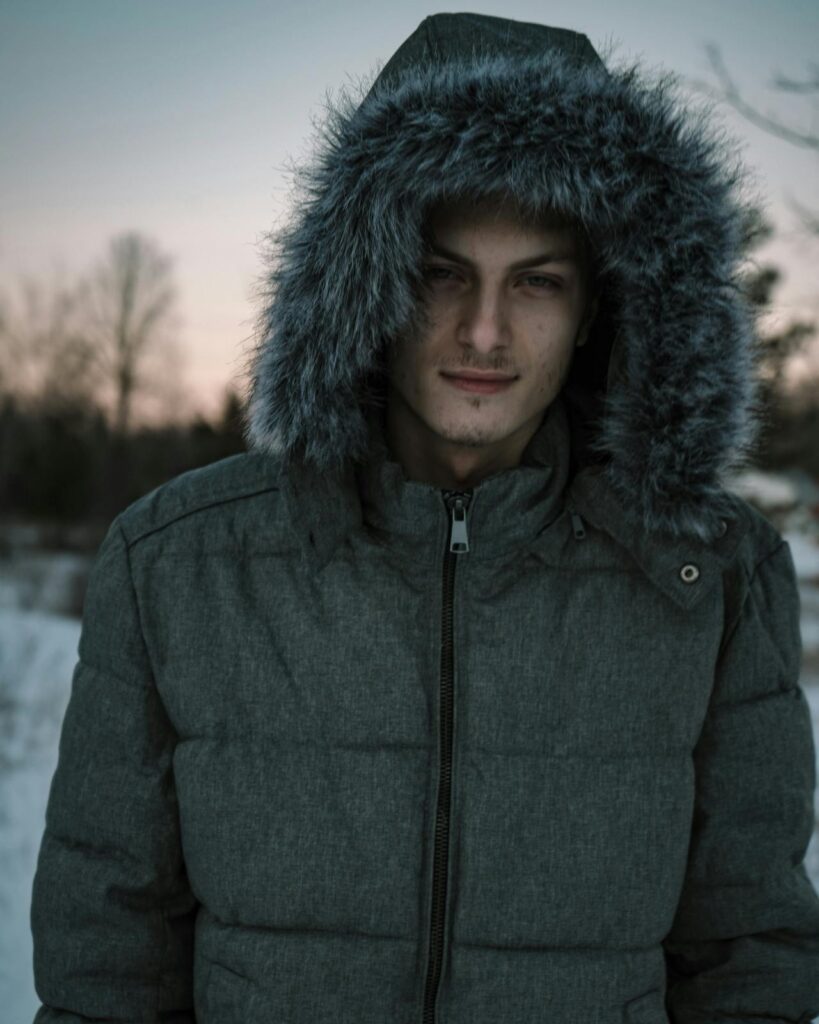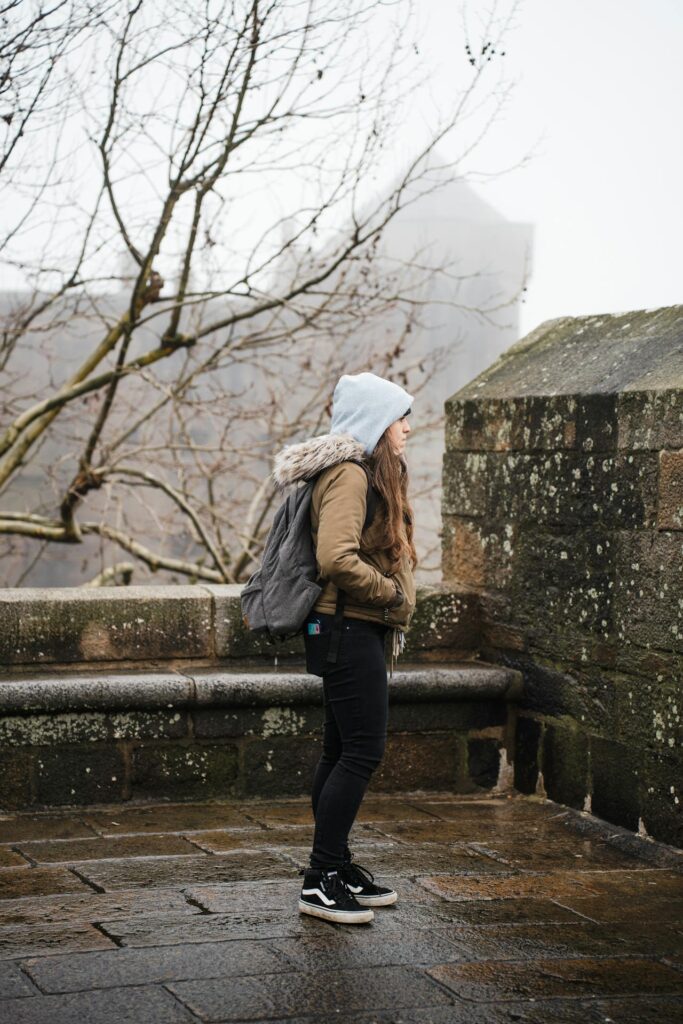Table of Contents
1. Understanding Winter Jacket Insulation

The most crucial feature of any winter jacket is the insulation, as it determines how well the jacket retains warmth. There are several types of insulation to consider:
- Down Insulation: Made from the soft under feathers of ducks or geese, down is a classic choice for extreme warmth without adding too much bulk. Down jackets are lightweight, compressible, and incredibly efficient at trapping body heat. However, they lose their insulating properties when wet, so make sure the jacket has a waterproof or water-resistant shell if you’re in rainy or snowy conditions.
- Synthetic Insulation: These jackets use man-made fibers like polyester to mimic the insulating properties of down. While synthetic materials may not be as warm as down for their weight, they tend to be more durable and insulate better when wet, making them a great choice for wet climates or active outdoor activities.
- Wool or Fleece: Wool and fleece are also used in some winter jackets. These materials are breathable and moisture-wicking, making them suitable for active winter sports or as mid-layers under a waterproof shell. Wool is naturally warm, even when wet, while fleece offers great warmth without the bulk.
2. Choosing the Right Fabric for the Outer Shell
The outer shell of your jacket plays a critical role in protecting you from the elements. Look for jackets made from water-resistant or waterproof materials, as this will help keep you dry in snow or rain.
- Gore-Tex: A highly breathable and waterproof fabric, Gore-Tex is one of the most popular materials used in high-performance winter jackets. It’s durable and keeps you dry even in the heaviest of snowstorms.
- Nylon and Polyester: Many winter jackets are made from nylon or polyester, often treated with a water-repellent coating. While these materials are not completely waterproof, they can withstand light rain or snow. Look for jackets that offer sealed seams to enhance waterproofing.
- Softshell vs. Hardshell: Softshell jackets are flexible and breathable, making them ideal for active outdoor pursuits like skiing or snowshoeing. Hardshell jackets are more rigid and offer superior protection against the wind and rain, making them ideal for harsh, icy conditions.
3. Fit and Functionality
A winter jacket needs to provide ample mobility while still insulating you effectively. The fit is a matter of personal preference, but a few things to keep in mind:
- Layering: If you’re planning to wear layers under your jacket, make sure it’s roomy enough to accommodate them without feeling too tight. A good rule of thumb is to try on the jacket while wearing your base layers and mid-layers to ensure a good fit.
- Length: Winter jackets come in various lengths, from waist-length to thigh-length to full-length. Longer jackets provide more warmth and coverage, which is essential in freezing temperatures. However, shorter jackets can be more practical for activities like walking or biking.
- Adjustable Features: Look for jackets with adjustable cuffs, hems, and hoods. These features help you tailor the jacket to your body, reducing drafts and trapping warmth in. A hood is also an essential feature, especially if it’s large enough to fit over a hat or helmet for extra protection.

4. Key Features to Look For
Besides insulation and fit, here are some key features that can elevate your winter jacket game:
- Pockets: Large, secure pockets are invaluable during the winter months. Look for jackets with multiple pockets, including chest and handwarmer pockets, and consider those with internal zippered compartments for valuables like your phone or wallet.
- Ventilation: If you’re planning on engaging in activities like skiing or hiking, look for jackets with underarm or back vents that can be opened for breathability. This helps prevent overheating while still keeping you warm in cold conditions.
- Reflective Details: If you’ll be out in low-light conditions, choose a jacket with reflective elements. These features improve your visibility and safety in early mornings or late evenings.

5. Consider Your Activities
When selecting a winter jacket, think about what kind of activities you’ll be engaging in. If you’re primarily commuting to work or strolling around the city, you might want a jacket that’s both stylish and functional. For those who engage in outdoor sports like skiing, snowboarding, or hiking, you’ll need something that offers superior performance, protection from the wind, and breathability for those active moments.
6. Popular Winter Jacket Styles
- Puffer Jackets: These jackets are filled with down or synthetic insulation and feature a quilted design. They’re warm, lightweight, and packable, making them ideal for travel or casual winter outings.
- Parka Jackets: A parka is a longer, insulated jacket typically filled with down or synthetic insulation. Parkas often feature a faux fur-lined hood and a water-resistant exterior, making them perfect for harsh winter conditions.
- Bomber Jackets: Bomber jackets are short, stylish, and usually insulated with down or synthetic material. They offer a sleek, urban look while still providing warmth.
- Technical Jackets: These jackets are designed for high-performance outdoor activities. With features like waterproof membranes, ventilation zips, and adjustable hoods, they offer great protection against the elements while also supporting movement.
7. Caring for Your Winter Jacket
To ensure your winter jacket lasts for years, it’s essential to take care of it properly. Follow the manufacturer’s care instructions, as washing and drying methods can vary depending on the materials used. In general, down jackets should be washed with a gentle detergent and tumble-dried with tennis balls to help restore loft. Synthetic jackets are easier to care for but should still be washed with care to maintain their waterproofing and breathability.
Conclusion
Choosing the perfect winter jacket involves balancing insulation, materials, and functionality to meet your specific needs. Whether you’re dealing with frigid temperatures, heavy snow, or damp conditions, there’s a jacket out there that can keep you comfortable and warm. By considering your lifestyle, activity level, and environmental conditions, you’ll be well on your way to finding the ideal winter jacket to help you embrace the cold season with confidence.
Ready to conquer winter? Browse our selection of premium winter jackets and find the perfect match for your cold-weather adventures!